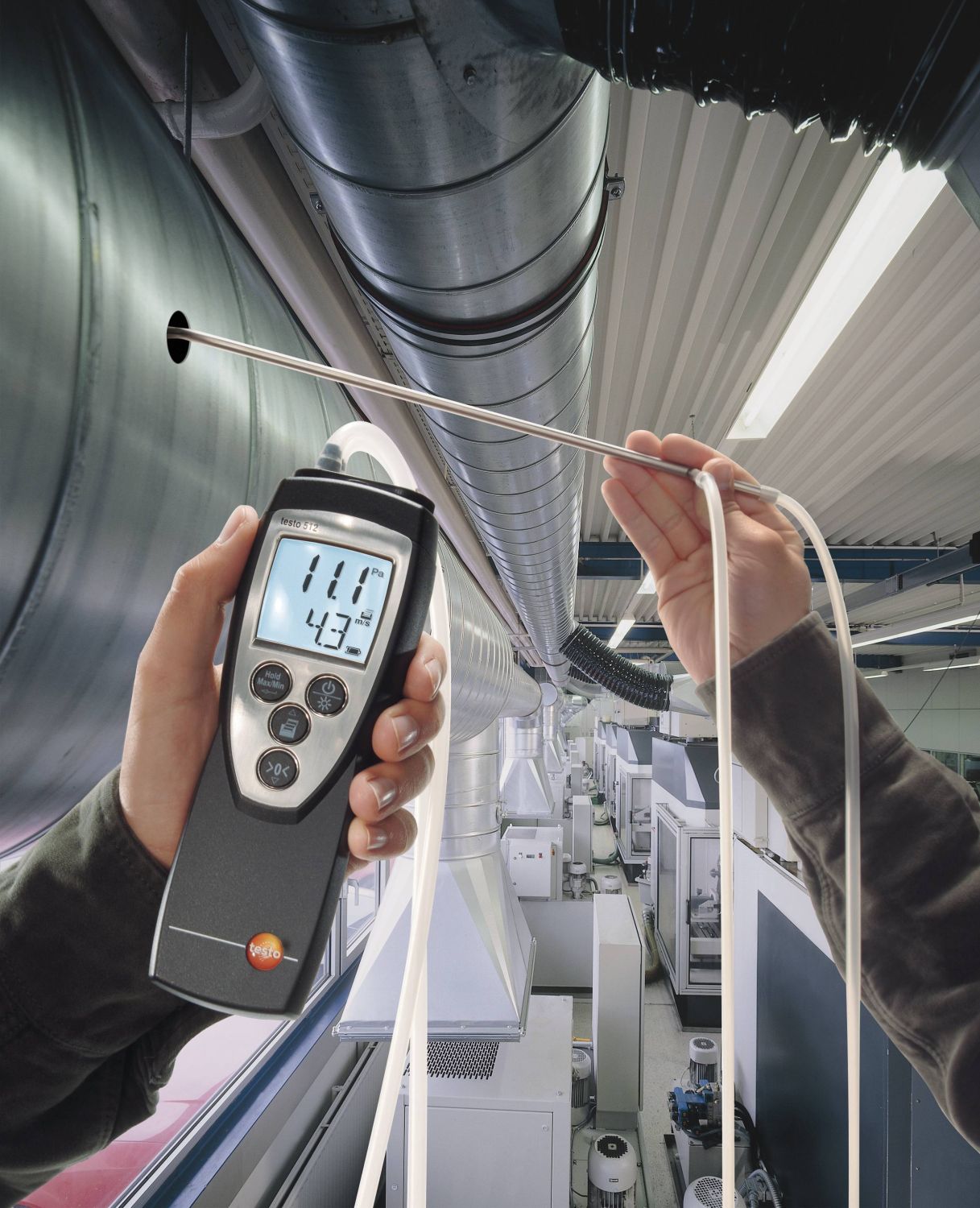In order to select the right measuring instrument for flow velocity measurements, the measurement location and the respective ambient conditions must be taken into account. In general, five measurement location types can be differentiated in flow velocity measurement.
Practical examples of flow velocity measurement
Air duct: low flow velocity

Thermal anemometer testo 405/testo 425
- For flows up to 5 m/s and clean air
- Very accurate in the low flow velocity range
Air duct: medium flow velocity

Vane anemometer testo 416
- For flow velocities up to 40 m/s, clean air and temperatures up to 70 °C
- Relatively insensitive to incorrect rotation from the correct flow direction
Air duct: high flow velocity

Differential pressure measuring instrument testo 512 with Pitot tube probe
- For high flow velocities up to 100 m/s, particle-contaminated and/or hot air (>350 °C)
- Sensitive to oblique or swirl flow
Flow velocity up to 200 m3/h at air inlets/outlets

Vane anemometer (100 mm) testo 417
- Integrates the flow velocity over a larger area, which averages out the disturbance caused by the grille.
Flow velocity up to 4000 m3/h at air inlets/outlets

Volume flow hood testo 420
- Integrated volume flow straightener for precise measurement at swirl outlets
- 2.9 kg light
